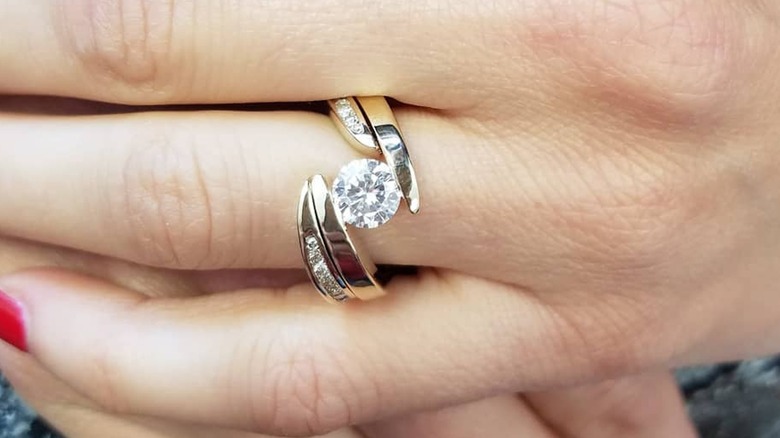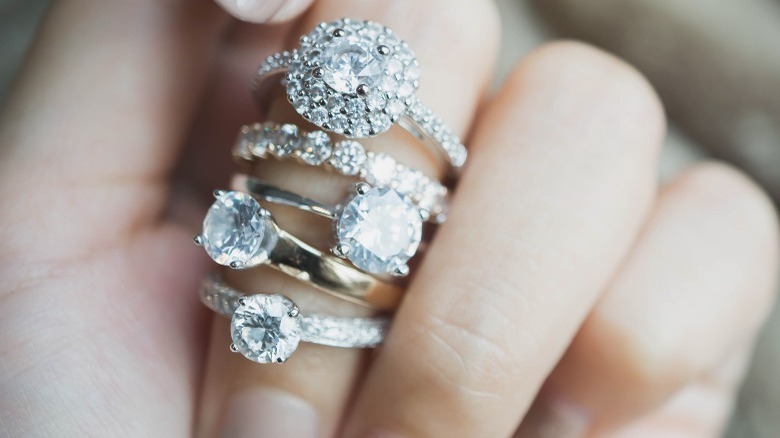Tension Settings Are The Engagement Ring Trend You Should Avoid At All Costs - Here's Why
Choosing an engagement ring comes with a sea of questions, from what are the best alternative stones to how much is the correct amount to spend. But one of the most important questions about an engagement ring is often overlooked: Which setting should you get?
Every ring with a stone will have a setting, the structure that holds the gem and keeps it attached to the ring itself. When you start shopping for an engagement ring, you'll find that there are a wide range of setting styles available. While each setting style has pros and cons, there is one setting that should always be avoided: a tension setting.
A tension setting uses the strength of the ring band, rather than prongs, to keep the stone in place. As visually attractive as this design may be, a tension setting is an incredibly risky style for a ring with high sentimental and monetary value.
Why you should avoid tension settings
A tension setting ring is undeniably gorgeous. The curvature of the band is elegant and unique, while the minimalist setting style leaves your gemstone on full display. Unfortunately, a tension setting is simply not practical for a piece as important as an engagement ring.
Since a tension setting relies entirely on the tight grip of the band, rather than prongs, any minor damage can weaken the setting and cause you to lose the stone. Most professional jewelers will discourage clients from getting a tension setting for an engagement ring, which is typically worn every day and can get exposed to a lot of wear and tear. As Gabriel & Co. Handcrafted Jewelry helpfully explains on TikTok, "The name in itself speaks volumes." Anything from a light bump to heat exposure can impact the precarious physics keeping the stone in place. Furthermore, a tension setting is a complicating factor for resizing your engagement ring because the band is what keeps the stone in place. You should always consider how resizable an engagement ring is, as you will likely need to have it adjusted at various points throughout your lifetime.
Instead of a tension setting, you can get a traditional setting style that mimics the silhouette of a tension setting. The band can curve around the stone, but below the stone there will still be a secure basket with sturdy prongs that will keep your engagement ring safe.
What to look for in an engagement ring setting
When choosing a setting style for your engagement ring, your first concern should be security. We've already reviewed the issues with a tension setting, but there are other features to think about, as well. As you examine a potential engagement ring, look at the prongs. Check how many there are and their size. Dainty rings are cute, but they're also fragile — too few prongs, or prongs that are too small, and your gemstone can easily pop out of place.
You should also factor in how much the setting protrudes out from the ring. Some setting styles keep a stone relatively flush against the band, but others elevate the stone quite a bit. If you want to wear your ring everywhere you go, or if you do lots of work with your hands, you'll probably want to stick to streamlined styles that eliminate the risk of snagging or breaking.
Finally, you should consider the strength of the band itself. Your setting style is only as secure as the band to which it's attached. If a band is too thin, it's more likely to break. When you go to a jeweler, be sure to ask to see rings with band widths that are sturdy enough to last you many years. Engagement rings come in all kinds of designs, and with a talented jeweler, you can find a ring that suits your style and stands the test of time.

